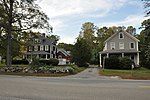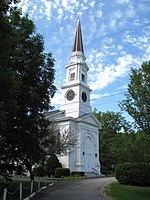North Wilmington station
Buildings and structures in Wilmington, MassachusettsFormer Boston and Maine Railroad stationsMBTA Commuter Rail stations in Middlesex County, MassachusettsRailway stations in the United States opened in 1979

North Wilmington station is an MBTA Commuter Rail station in North Wilmington, Massachusetts. It serves the Haverhill Line, and is located off Middlesex Avenue (Route 62). It has some of the most limited station faculties on the MBTA system – a single short non-accessible platform serving the line's single track at the location, with a small parking lot and shelter for passengers. North Wilmington served by most Boston–Haverhill trains except for a small number that use the Wildcat Branch. It is a flag stop except during weekday peak hours.
Excerpt from the Wikipedia article North Wilmington station (License: CC BY-SA 3.0, Authors, Images).North Wilmington station
Middlesex Avenue,
Geographical coordinates (GPS) Address External links Nearby Places Show on map
Geographical coordinates (GPS)
| Latitude | Longitude |
|---|---|
| N 42.5696 ° | E -71.1597 ° |
Address
North Wilmington
Middlesex Avenue 370
01887
Massachusetts, United States
Open on Google Maps









